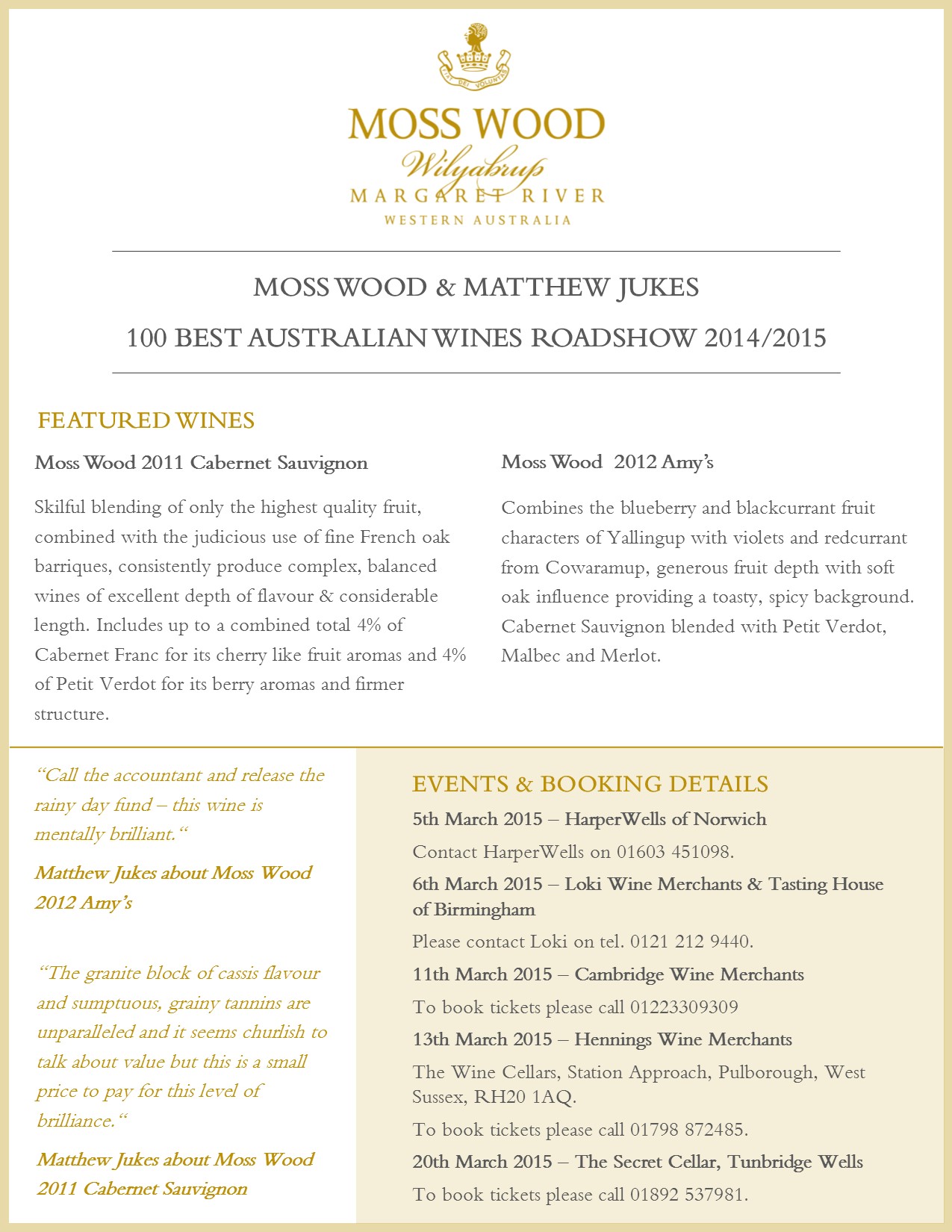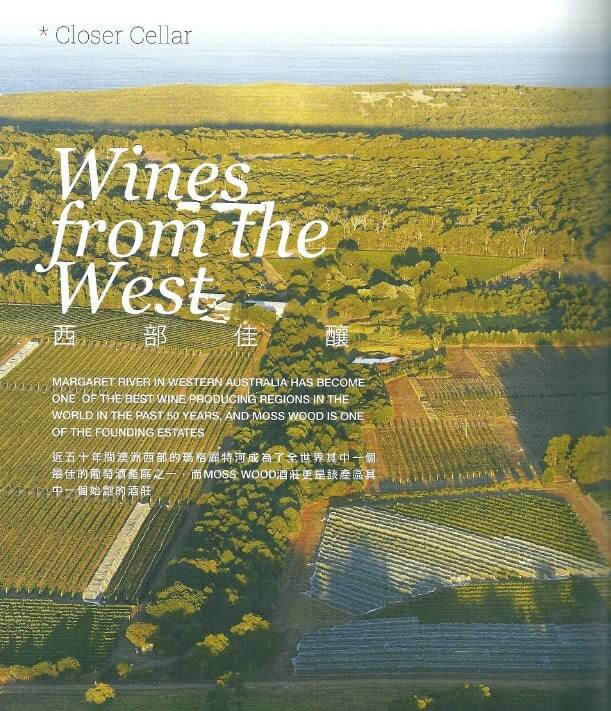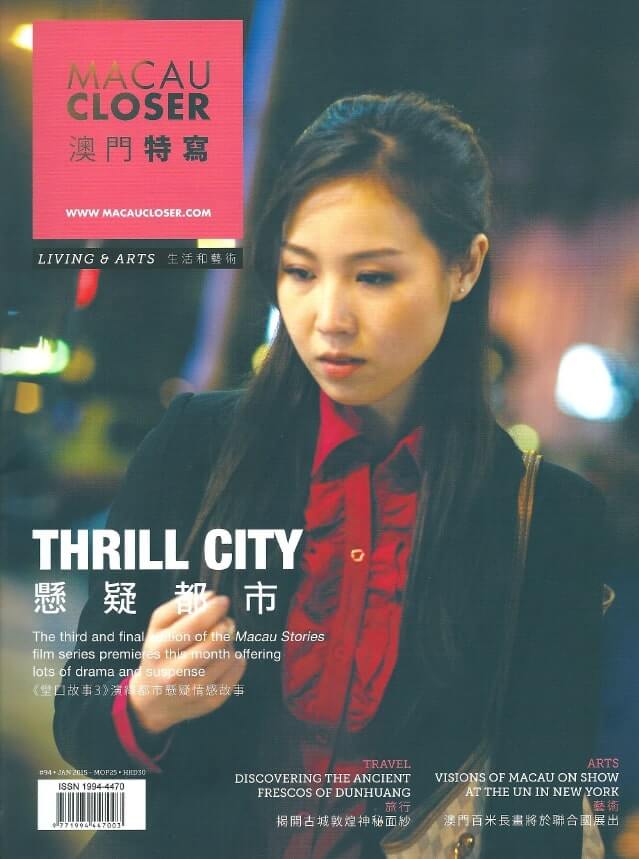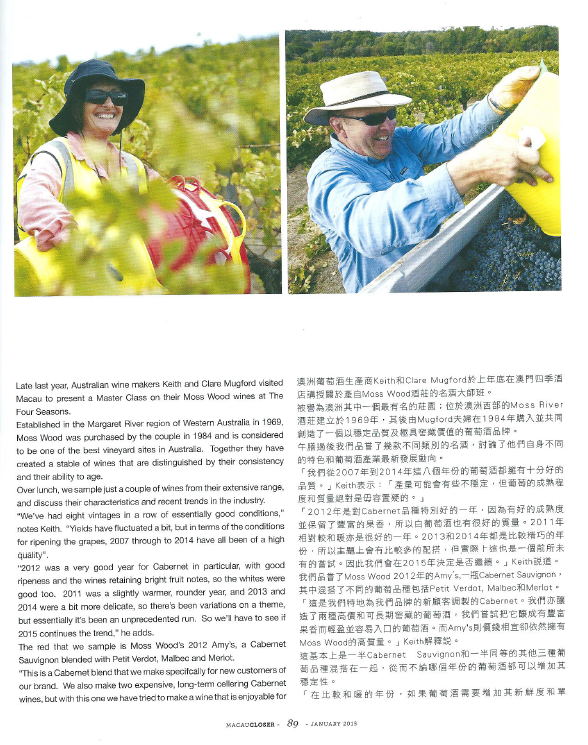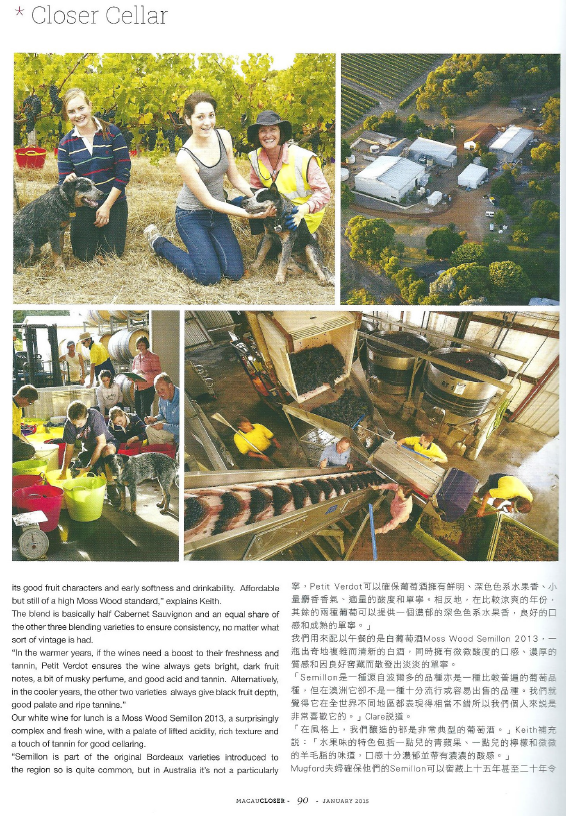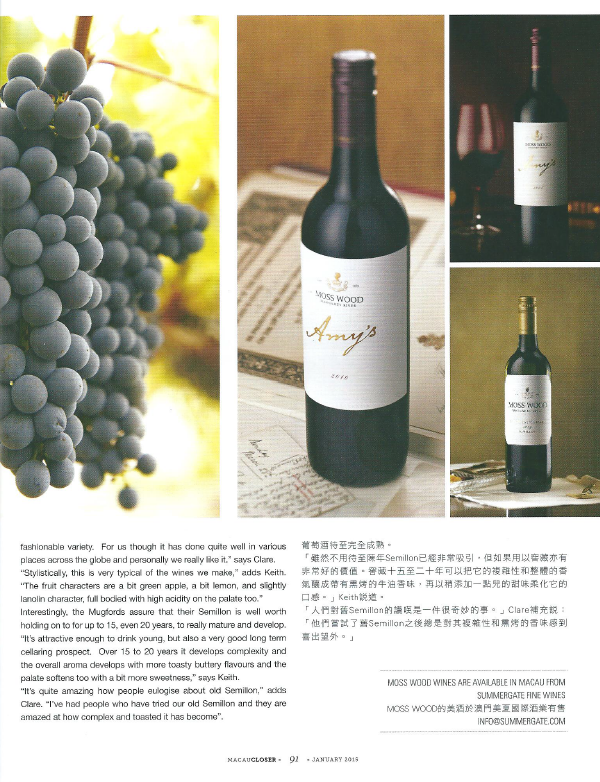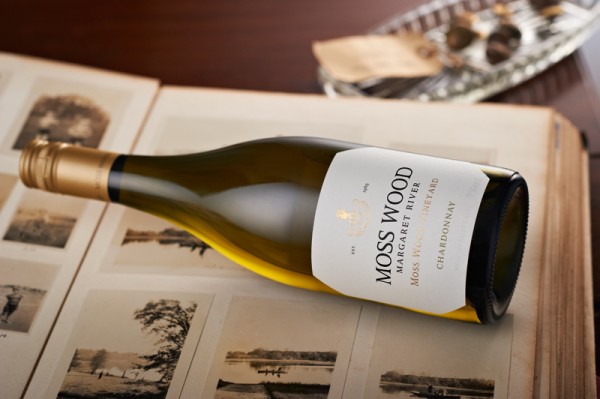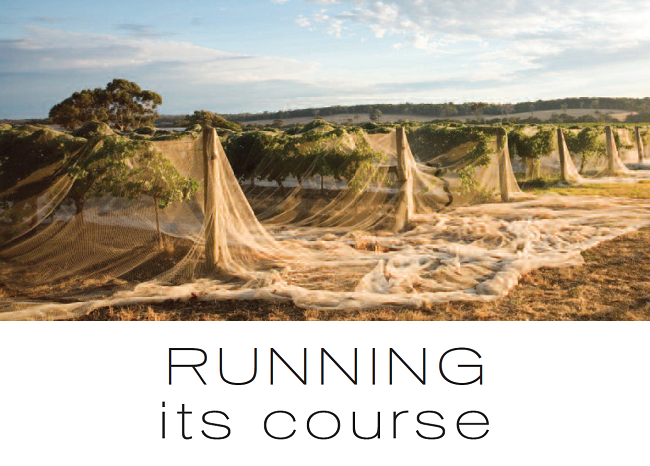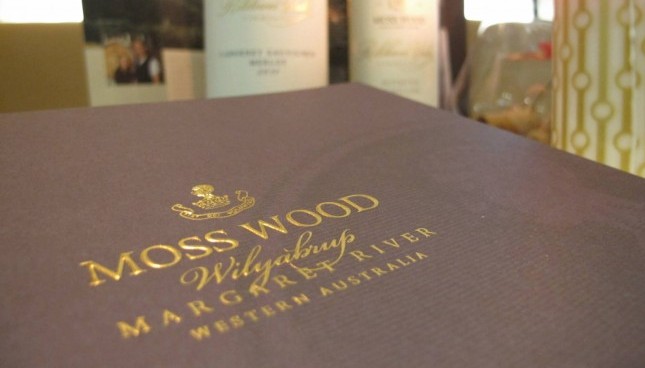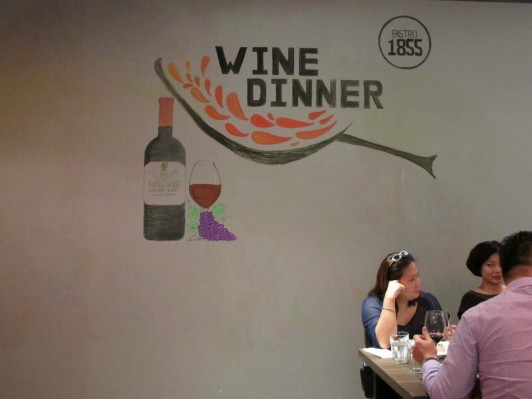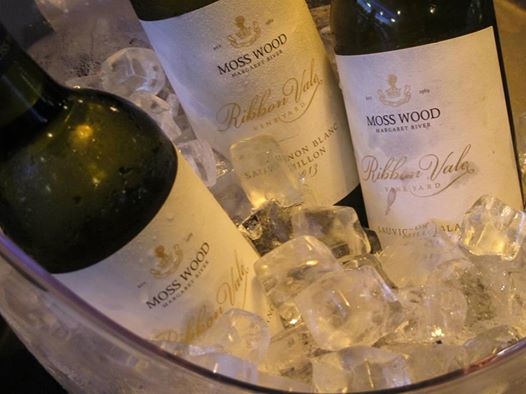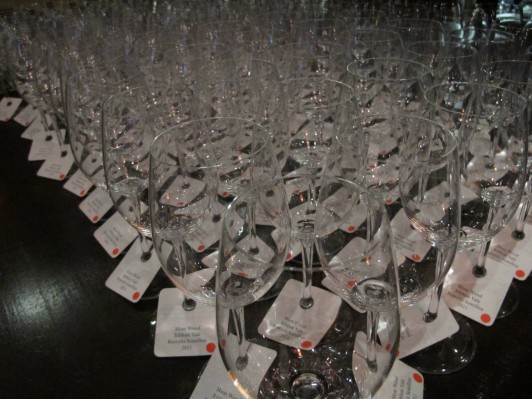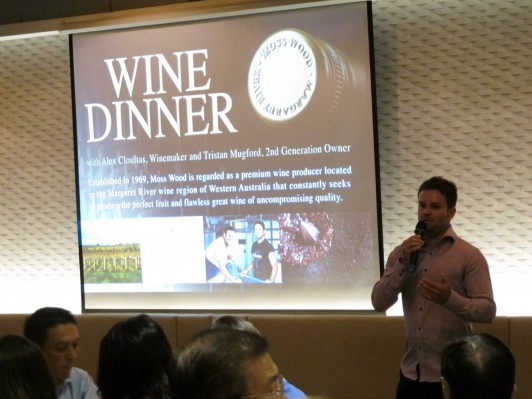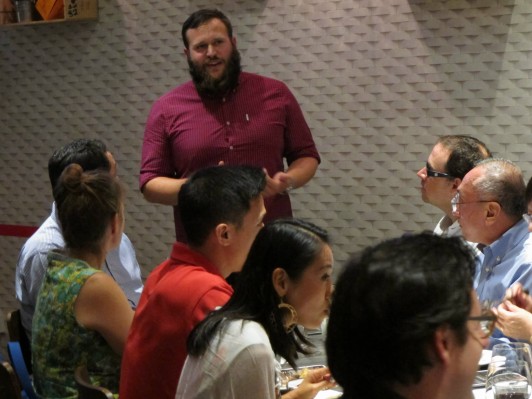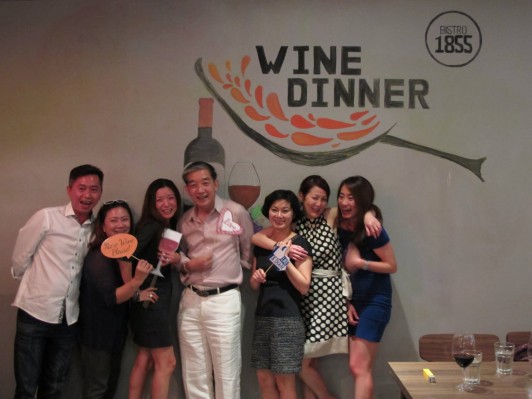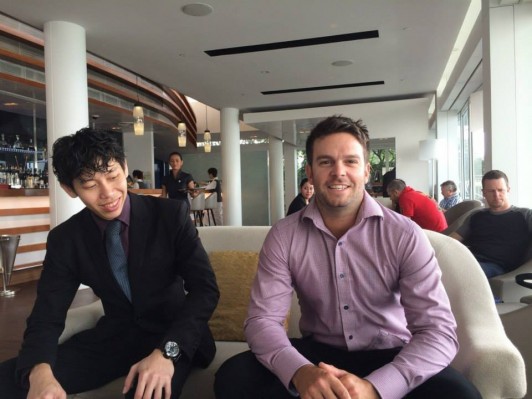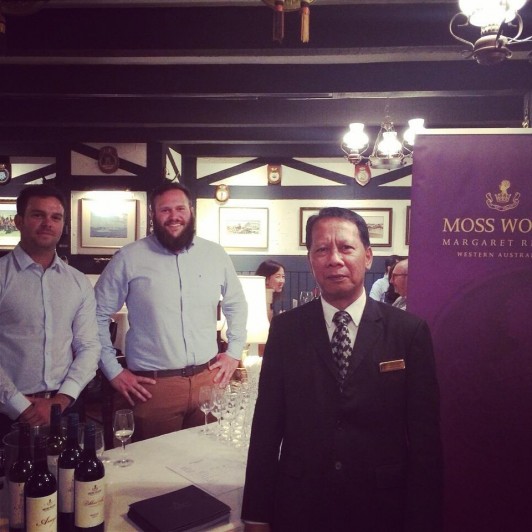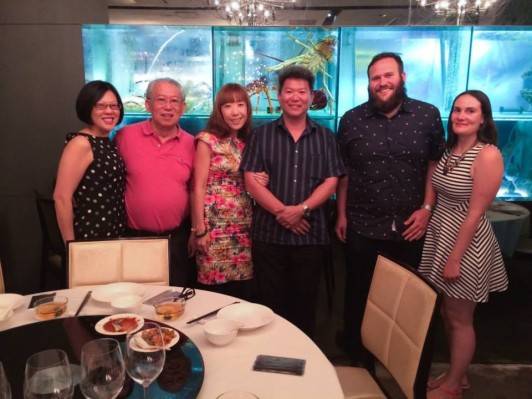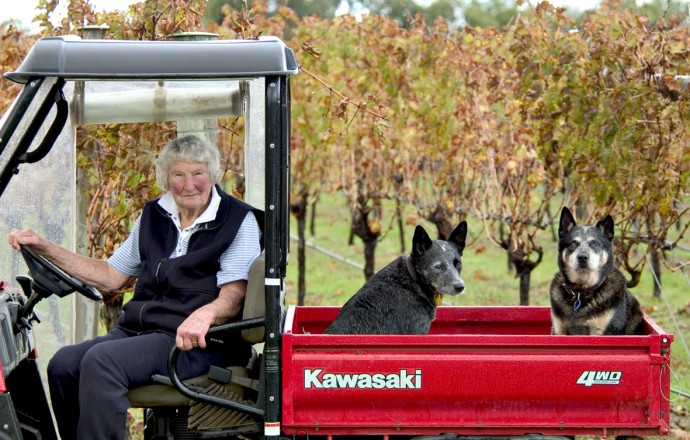News
Moss Wood wines on The Fat Duck Melbourne’s wine list.
We are excited to announce that our Moss Wood 2006 and 2009 Cabernet Sauvignon and Moss Wood 2013 Semillon are on The Fat Duck Melbourne’s wine list. The restaurant opened his doors on the 3rd of February 2015.
Read more about The Fat Duck Restaurant Melbourne
To read more about the wines:
Moss Wood Cabernet Sauvignon 2006
Moss Wood Cabernet Sauvignon 2009
Moss Wood Semillon 2013
Picture: Nathan Dyer
Read MoreWines from the West – Moss Wood in Macau Closer – January 2015
“Chardonnay – The Chameleon of Grapes” – Moss Wood 2011 Chardonnay – Stephen Lau – Ming Pao News
Moss Wood is one of the first wineries in Margaret River. Keith and Clare Mugford owns the winery. The writer met Keith and Clare Mugford a few months ago in a wine tasting event and was impressed by theit enthusiastic and wholehearted involvement in running the winery. Moss Wood Cabernet Sauvignon is their flagship wine and the most famous one. The wine lives up to its reputation! All other wines from Moss Wood that the writer tried were impressive especially for the Chardonnay. Moss Wood is an impressive winery from Margate River.
The vintage 2011 that the writer tasted was full of fresh flowers peach and melon aromas. In the palate, it has all the tastes as in the nose and with a refreshing acidity; the smoked almond flavour adds up the complexity of the wine. The wine finishes quickly in the mouth but the after taste stays long, this makes the writer thinks he should have known of this wine much earlier.
Read More
RUNNING its course – The Drinks Business – January 2015
Superb article about Margaret River wine region and Moss Wood in The Drinks Business magazine, January 2015 edition. Here is an extract.
Click on this link to read the entire article: Read the article
“It may only be a few decades since Australia’s Margaret River was first planted, butas Stephen Brook writes, an artisanal passion for fine wine is already deeply rooted.
[…]
AGEING GRACEFULLY
If one of the criteria for establishing the seriousness of a wine is its capacity to age, then Margaret River reds as well as whites have no difficulty at all passing that test. Cullen Cabernets from the late 1970s and Moss Wood Cabernets from the early 1980s are still impressive decades later. Since these wines were made from vines no more than ten years old, their survival is remarkable. Perhaps they would have been even better five or ten years ago, but nonetheless the wines, though mature, have not faded. There is little doubt that the Cabernets being produced today at the top estates will age even better than those wines from the 1970s and 1980s.
Those founding wineries – Vasse Felix, Moss Wood, Cullen, Cape Mentelle, and Leeuwin – are still among the great names of the region. Indeed, many of the Margaret River pioneers – such as Denis Horgan of Leeuwin and Keith Mugford of Moss Wood – are still active, though in some cases handing over management of their wineries to the next generation.
[…]
The speed with which Margaret Riverdeveloped its vineyards and reputation is striking. It avoided the phase – which, for example, New Zealand went through – of planting mediocre varieties before, after much trial and error, it realised its strength lay in Sauvignon, Chardonnay, and Pinot Noir. From the outset the Margaret River pioneers planted the varieties for which it is still best known today. Good though the early vintages were, there is no doubt that the farming and winemaking today are more expert and consistent.
Keith Mugford of Moss Wood says: “I am not someone who looks back at the good old days. Quite the opposite. I know we make better wines in 2013 than we did when I arrived here in 1979 and that’s the way it should be. How would it reflect on us if we spent more than 30 years doing something without learning ways to improve it?” One clear difference is that the fruit is picked at higher ripeness levels. That does inevitably result in higher alcohol, but few wines seem over-alcoholic and thus unbalanced. The Margaret River climate doesn’t easily permit excesses, which is why the wines are so consistent.
QUALITY ON OFFER
The emphasis has always been on quality because the region is not well suited to mass production. There are other regions of Australia where a high degree of mechanisation permits high-volume wines of decent, if not exceptional, quality to be produced. There is some mechanisation in Margaret River, especially during harvest, but most vineyards are small and tend to be cultivated by hand. These labour costs account for the high prices of many of the wines, as well as the fact that Western Australia is an isolated area, so every item that’s needed – bottles, corks, filters – has to be shipped in and then the final wines need to be shipped out. It’s not difficult to do, but it is expensive.
If there is a bargain style in Margaret River it is probably the blend of australia: margaret river Sauvignon Blanc and Semillon that has found itself a natural home here. Semillon was a variety planted long ago in the region, and is made both in oaked and unoaked styles. A few wineries, such as Moss Wood, still make a pure Semillon.
Almost every winery in Margaret River produces a Sauvignon/Semillon blend. It’s a style that has been associated with Margaret River for about three decades. The freshness and acidity of the Sauvignon blends beautifully with the fatter, richer Semillon fruit, and sometimes a proportion of the wine is fermented in oak to give more texture. These wines are rarely very expensive, but have the merit of charm and drinkability.
But the true strengths of Margaret River lie with Chardonnay and Cabernet Sauvignon. Each important producer tends to have its own style, although this can change as winemakers come and go. Cullen’s wines have great concentration and structure; the Moss Wood Cabernets are more richly textured than some other reds from the region; Vasse Felix Chardonnays have a pure and crystalline quality; Fraser Gallop produces rather austere wines that are beautifully balanced and will age well; and Leeuwin’s Cabernet and Chardonnay both show considerable power and weight. Less well-known producers such as Juniper, Xanadu, and Howard Park are now regularly making wines of exceptional quality, both white and red.
The hallmark of Margaret River is consistency. The climate plays a large part in this, of course, but so does the human scale of the vineyards, which give the region an almost European atmosphere.
It’s the proliferation of family-owned properties, the passion for good food, and the exaltation of fine wine as a cultural, not just a commercial, asset. The region is extremely young, yet has already planted deep roots.”
Read More
Singapore visit – January 2015
Assistant winemaker, Alex Coultas, and Clare and Keith’s eldest son, Tristan Mugford, along with Tristan’s partner Eliza Jamieson were in Singapore in January 2015 to visit Hai Choo Wines and Spirits, Moss Wood’s importer and distributor in Singapore, and present Moss Wood wines.
Here are a few pictures of their trip and of Moss Wood wine dinner held at Bistro 1855 on January the 8th.
Read More
Moss Wood in John Lewis’ best wines of 2014 – Newcastle Herald
On Newcastle Herald’s website, John Lewis lists his best wines of 2014.
Moss Wood 2011 Cabernet Sauvignon and Moss Wood 2010 Pinot Noir are respectively mentionned under the best Cabernet Sauvignon of the Year and the best Pinot Noir of the Year.
To read more about the wines:
Moss Wood 2011 Cabernet Sauvignon
To read John Lewis’ article visit Newcastle Herald’s website: http://www.theherald.com.au/story/2800977/john-lewis-best-wines-of-2014/
(Pic from Newcastle Herald’s website)
Read MoreMoss Wood Dinner at Bistro 1855, Singapore
As members will know, Moss Wood is a small family owned and run vineyard and winery in the Wilyabrup sub-region of Margaret River, Western Australia.
Custodians, Clare & Keith Mugford’s hands-on approach, from the vineyard to the winery, is reflected in the quality of their fine wines.
Their assistant winemaker, Alex Coultas, and eldest son, Tristan Mugford, along with Tristan’s partner Eliza Jamieson will be in Singapore presenting a range of Moss Wood wines at Bistro 1855.
WHERE:
Bistro 1855, 3 Temasek Boulevard, Suntec City, Tower 4 #01-463
WHEN:
Thursday January 8th, 2015 at 7.00pm
The following vintages of Moss Wood wines will be served with dinner:
2013 RIBBON VALE SEMILLON SAUVIGNON BLANC
Prawn & Crabmeat Salad with grapefruit and shallot vinaigrette
2012 MOSS WOOD CHARDONNAY
Fresh Oyster Au Gratin
2011 RIBBON VALE MERLOT
Duck Breast Confit with pastry and berry compote
2011 RIBBON VALE CABERNET SAUVIGNON MERLOT
Roasted Striploin with asparagus, dauphinoise potatoes and herb butter
2011 RIBBON VALE BOTRYTIS SEMILLON
Warm Peach Jalousies
The cost to attend is S$108 per person.
Please contact Li Juan at 1855 Bistro for bookings:
Email: lijiuan@1855thebottleshop.com
Ph: 6735 1855
Read More
The Story of Amy
Clare and Keith are frequently asked, “Who is Amy?” It’s a favourite story which they are always happy to share.
It began just prior to the 1985 vintage, when a local Yallingup lad by the name of Ian Bell called into Moss Wood to see if we needed any help through the harvest. He was a big, strapping bloke and Clare and Keith were happy to have him on board. He helped through the vintage, then with pruning and did such a fine job he finished up staying for 21 years.
Ian lived on the family farm, Glenmore, about 10 kilometres north of Moss Wood. Early on in the piece, he invited Clare and Keith for dinner, where they were introduced to his parents, Allan and Sonia but perhaps most importantly, his grandparents, Amy and Bill Beers.
Glenmore, in fact, belonged to Amy and she was a lady with quite a history to share. Born on the property in 1920, she had lived there all her life, apart from a brief stint in Melbourne during the Second World War. Her descriptions of life in the Margaret River region, especially during the Great Depression, were entrancing and so different to the modern life. She would proudly say the only things they used to buy from outside the farm were kerosene, matches, sugar and tea. Everything else they grew themselves. In 1985 she was still an active, 65 year old beef farmer, running the farm and looking after her cows, who only allowed herself one day off per week, to go and play in the Ladies golf competition at Busselton Golf Club. Without exaggeration, she was a strong and independent woman many decades before it became a social cause.
By 1990, Ian had graduated in Viticulture from Roseworthy College in South Australia and he approached his grandmother about diversifying the farm’s income and planting a vineyard. Amy and her family had always been entrepreneurial and so she happily agreed that one of her valuable beef paddocks could be turned into a vineyard and Ian got the project under way with his first Cabernet planting.
In 1997, Clare and Keith negotiated a 3 year contract with Ian to buy the fruit and in 1998, the first wine was released as the Moss Wood “Glenmore Vineyard” Cabernet Sauvignon.
Ian had also made clear that he would eventually like to leave Moss Wood, return to working on the farm and make his own wine. Clare and Keith were more than happy to encourage him to do so and he released his first “Glenmore Cabernet Sauvignon”, the 2000 vintage, in 2004. Ian finally resigned from Moss Wood in 2006.
The Mugfords didn’t want there to be any confusion between the two products and began looking around for a new name that would link their wine to the Glenmore vineyard. They asked Amy if she’d be happy if it were to be named after her and she very graciously agreed and so, with the 2003 vintage, Clare and Keith released the “Amy’s Vineyard”.
Since then, there were a couple more name changes. The first was to “Amy’s Blend”, when the wine became a blend of Cabernet Sauvignon, Petit Verdot and Malbec and then over time, everybody, customers and Moss Wood people alike, began to abbreviate the name simply to “Amy’s”, the name we still use today.
Sadly, but fittingly, Amy died on the Glenmore farm in 2007. Although she’s no longer with us to share her stories, we’re sure she’d be proud of the wine and delighted to think it was enjoyed by customers all round the world.
Read MoreOver £100,000 raised at RFDS Gala Dinner, London
His Royal Highness, The Prince of Wales last night praised the ‘Fair Dinkum Aussie ingenuity’ of the Royal Flying Doctor Service in meeting the challenges of assisting over 800 people a day in rural and remote Australia.
As Patron of the Royal Flying Doctor Service – Friends in the UK, the Prince recorded a video message to thank the 270 guests at their Gala Dinner at the Imperial War Museum for their continued support of the Flying Doctor’s endeavours.
“In November 2012, in Longreach, my wife and I were so pleased to be able to dedicate a Service aircraft in honour of the efforts of the Royal Flying Doctor Service – Friends in the U.K. At that time, I was reminded of the many and varied challenges faced by the Service in delivering support where there are often no hospitals, doctors or medical services,” The Prince said.
Since the RFDS – Friends in the UK aircraft was dedicated by HRH The Prince of Wales in November 2012, it has flown 491,984 kilometres, carried out 850 missions and carried 873 patients.
The Chairman of the Royal Flying Doctor Service – Friends in the U.K, Mr Peter Box expects the 2014 Gala Dinner will have raised over £100,000. He thanked the sponsors, donors and guests for their wonderful generosity.
Adam Hills, comedian and host of The Last Leg television program, got the party started with a hilarious stand-up comedy spot. Adam brought two Australian-based RFDS ‘legends’ onto the stage to personally receive the thanks of all present in a way only Adam could contrive!
The 270 guests enjoyed premium Moss Wood wine from Western Australia while supporting the Flying Doctor by bidding on a range of valuable and unique auction prizes.
Kate Ceberano then rewarded their generosity with a sublime performance of some of her famous songs, holding the audience spell-bound. Kate flew to London courtesy of Virgin Australia especially to support the Gala Dinner for the Royal Flying Doctor Service. Today, Kate will fly straight back to Australia to become the first female artist to be inducted into the Australian Songwriters Hall of Fame on 24 November.
The Royal Flying Doctor Service provides vital 24 hour emergency cover, and clinical and preventative health services across 90% of Australia’s land mass to almost 300,000 rural and remote patients per year – that’s more than one every two minutes. Operating continuously since 1928, our doctors and nurses now work from 21 bases across Australia utilising our fleet of 61 fully instrumented aircraft with the very latest technology. Today, RFDS pilots annually fly the equivalent of 25 round trips to the moon.
The Royal Flying Doctor Service is a not-for-profit organisation that relies heavily on fundraising and donations from the community to purchase aircraft and fund much-needed medical and aeronautical equipment.
http://www.royalflyingdoctor.org.uk/gallery/

